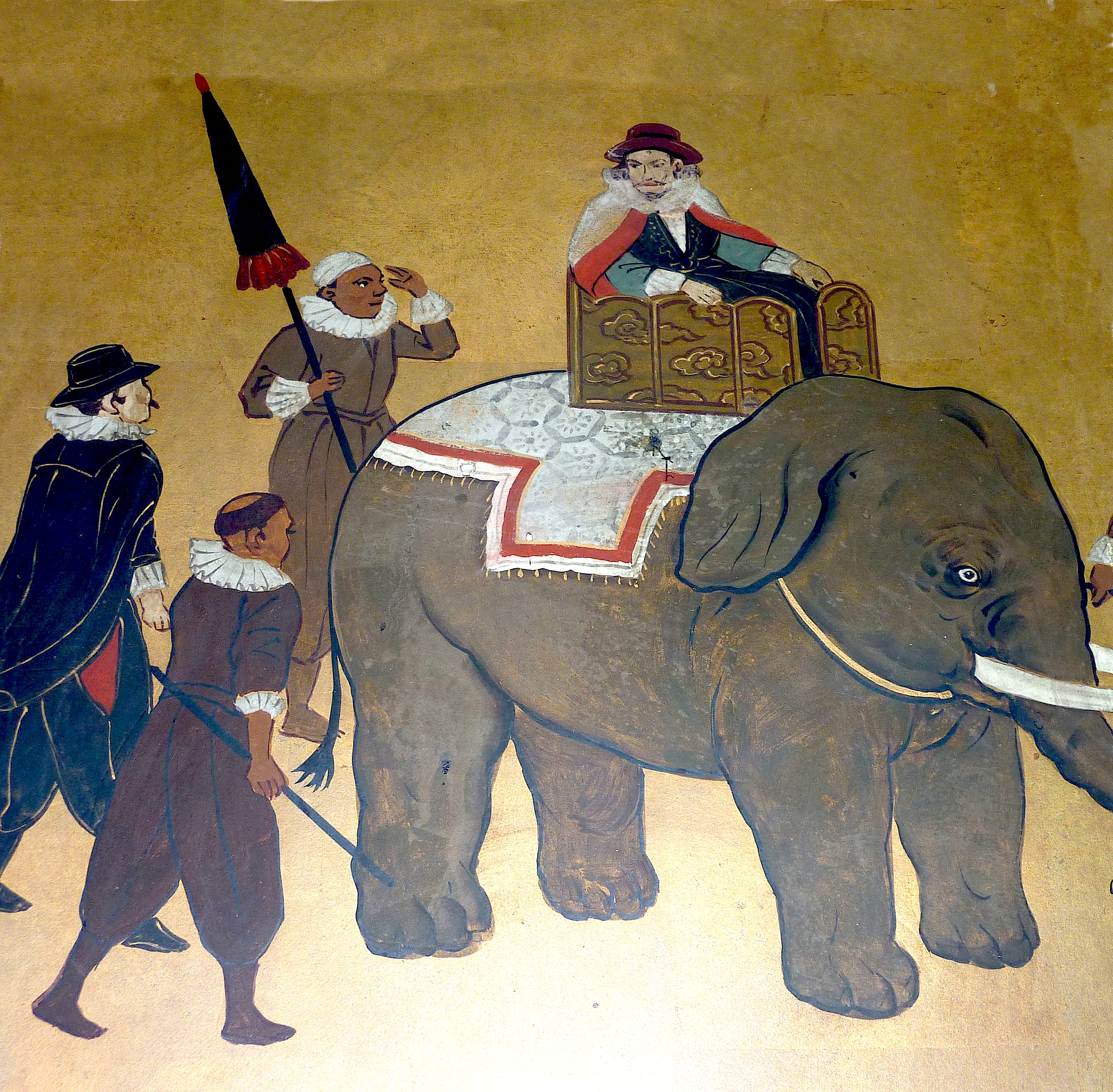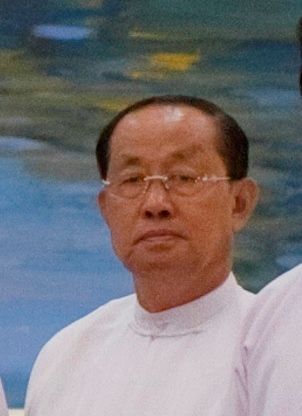|
Christianity In Myanmar
Christianity in Myanmar has a history dating to the early 18th century. According to the 2016 census, Christianity is the country's second largest religion, practiced by 6.3% of the population, primarily among the Kachin, Chin and Kayin, and Eurasians because of missionary work in their respective areas. About four-fifths of the country's Christians are Protestants, in particular Baptists of the Myanmar Baptist Convention; Roman Catholics make up the remainder. Christians have faced some hostility or even persecution since the 1920s. Christians have not moved to the higher echelons of power. A small number of foreign Christian missionary organisations have been permitted to enter the country to conduct religious conversion work, such as World Vision following Cyclone Nargis. A long-standing ban on the free entry of missionaries and religious materials has persisted since independence in 1948, which is seen as hostile to Christianity. The burning of Christian churches is ... [...More Info...] [...Related Items...] OR: [Wikipedia] [Google] [Baidu] |
Christianity In India
Christianity is India's third-largest religion with about 27.8 million adherents, making up 2.3 percent of the population as of the 2011 census. The written records of the Saint Thomas Christians state that Christianity was introduced to the Indian subcontinent by Thomas the Apostle, who sailed to the Malabar region in the present-day Kerala state in 52 AD. The Acts of Thomas mentions that the first converts were Malabarese Jews, who had settled in India before the birth of Christ. Thomas who was a Jew by birth came in search of Indian Jews. Following years of evangelising, Thomas was martyred and his remains were buried at St. Thomas Mount in Mylapore. A scholarly consensus exists that Christian communities had firmly established in the Malabar by 600 AD at the latest. These communities were composed mainly of the Oriental Orthodox Eastern Christians, belonging to the Church of the East in India, that used Syriac as their liturgical language. Following th ... [...More Info...] [...Related Items...] OR: [Wikipedia] [Google] [Baidu] |
Vice President Of Myanmar
The vice-presidents of Myanmar (also known as Burma) are the second highest-ranking posts in the government of the Republic of the Union of Myanmar. The offices were established by the 2008 Myanmar constitution and rank directly below the president. The offices came into effect on 30 March 2011, when the new government assumed ''de jure'' power and essentially function in the same manner as any other deputy head of state. There are two vice-presidential posts in the government, but no distinction is officially made between them. It can be assumed that the posts follow the order of seniority, much like the ones practised by the Vice Premier of the People's Republic of China. Vice-Presidents in Socialist Republic of the Union of Burma The position of Vice President of Socialist Republic of the Union of Burma was created in 1985 by two changes in the Constitution of Burma and in the basic law of the Burma Socialist Programme Party. First Vice-Presidents after 2011 Second ... [...More Info...] [...Related Items...] OR: [Wikipedia] [Google] [Baidu] |
Henry Van Thio
Henry Van Thio (; born 9 August 1959) is a Burmese politician who is the Second Vice President of Myanmar since 30 March 2016. He previously served as a member of Amyotha Hluttaw (House of Nationalities). In the 2015 election, he contested and won the Chin State No. 3 constituency for a seat in the country's upper house. He was sworn in as the Second Vice President on 30 March 2016. Early life and military career He is an ethnic Chin and graduated with a Bachelor of Arts in Geography from Mandalay Arts and Science University, with a Graduate Diploma in Law from Rangoon Arts and Science University. He previously served as a Major in the Burmese Army. Vice Presidency On 10 March 2016, he was nominated as one of the Vice Presidents of Myanmar by National League for Democracy. On 11 March 2016, 148 MPs nominated him as one of the Vice Presidents of Myanmar from the House of Nationalities and on 15 March 2016, he received 79 votes out of 352 in the Assembly of the Union, beco ... [...More Info...] [...Related Items...] OR: [Wikipedia] [Google] [Baidu] |
Church Of The Province Of Myanmar
The Church of the Province of Myanmar in Asia is a member church of the Anglican Communion. The province comprises the entire country of Myanmar. The current archbishop of Myanmar and bishop of Yangon is Stephen Than Myint Oo. Official name The Church of the Province of Burma was created as an independent province of the Anglican Communion on 22 February 1970, and changed its name to the Church of the Province of Myanmar when the new country's name was adopted in 1989. History Throughout the British rule in Burma, colonial period the Church of England had a strong presence in the country because the majority of the British belonged to that church. The great majority of the Anglo-Burmese people, Anglo-Burmese and Anglo-Indian communities in the country were also Anglicanism, Anglicans and the number of schools run by the Church of England to educate British and Eurasian children increased. Notable schools include St Mary's and St Michael's in Maymyo and Mandalay. Until 1930 the c ... [...More Info...] [...Related Items...] OR: [Wikipedia] [Google] [Baidu] |
Anglican Communion
The Anglican Communion is the third largest Christian communion after the Roman Catholic and Eastern Orthodox churches. Founded in 1867 in London, the communion has more than 85 million members within the Church of England and other autocephalous national and regional churches in full communion. The traditional origins of Anglican doctrine are summarised in the Thirty-nine Articles (1571). The Archbishop of Canterbury (, Justin Welby) in England acts as a focus of unity, recognised as ' ("first among equals"), but does not exercise authority in Anglican provinces outside of the Church of England. Most, but not all, member churches of the communion are the historic national or regional Anglican churches. The Anglican Communion was officially and formally organised and recognised as such at the Lambeth Conference in 1867 in London under the leadership of Charles Longley, Archbishop of Canterbury. The churches of the Anglican Communion consider themselves to be par ... [...More Info...] [...Related Items...] OR: [Wikipedia] [Google] [Baidu] |
Anglican
Anglicanism is a Western Christian tradition that has developed from the practices, liturgy, and identity of the Church of England following the English Reformation, in the context of the Protestant Reformation in Europe. It is one of the largest branches of Christianity, with around 110 million adherents worldwide . Adherents of Anglicanism are called ''Anglicans''; they are also called ''Episcopalians'' in some countries. The majority of Anglicans are members of national or regional ecclesiastical provinces of the international Anglican Communion, which forms the third-largest Christian communion in the world, after the Roman Catholic Church and the Eastern Orthodox Church. These provinces are in full communion with the See of Canterbury and thus with the Archbishop of Canterbury, whom the communion refers to as its ''primus inter pares'' (Latin, 'first among equals'). The Archbishop calls the decennial Lambeth Conference, chairs the meeting of primates, and is t ... [...More Info...] [...Related Items...] OR: [Wikipedia] [Google] [Baidu] |
Methodist
Methodism, also called the Methodist movement, is a group of historically related denominations of Protestant Christianity whose origins, doctrine and practice derive from the life and teachings of John Wesley. George Whitefield and John's brother Charles Wesley were also significant early leaders in the movement. They were named ''Methodists'' for "the methodical way in which they carried out their Christian faith". Methodism originated as a revival movement within the 18th-century Church of England and became a separate denomination after Wesley's death. The movement spread throughout the British Empire, the United States, and beyond because of vigorous missionary work, today claiming approximately 80 million adherents worldwide. Wesleyan theology, which is upheld by the Methodist churches, focuses on sanctification and the transforming effect of faith on the character of a Christian. Distinguishing doctrines include the new birth, assurance, imparted righteousn ... [...More Info...] [...Related Items...] OR: [Wikipedia] [Google] [Baidu] |
Assembly Of God
The Assemblies of God (AG), officially the World Assemblies of God Fellowship, is a group of over 144 autonomous self-governing national groupings of churches that together form the world's largest Pentecostal denomination."Assemblies of God". ''The Oxford Dictionary of the Christian Church''. Ed F. L. Cross and E. A. Livingstone. Oxford University Press Inc. ''Oxford Reference Online''. Oxford University Press. Accessed 22 June 2011. As an international fellowship, the member denominations are entirely independent and autonomous, but they are united by shared beliefs and history. The Assemblies originated from the Azusa Street Revival of the early 20th century. This revival led to the founding, in 1914, of the Assemblies of God in the United States, the first Finished Work Pentecostal denomination. Through foreign missionary work and establishing relationships with other Pentecostal churches, the Assemblies of God expanded into a worldwide movement. It was not until 1988 t ... [...More Info...] [...Related Items...] OR: [Wikipedia] [Google] [Baidu] |
Lahu People
The Lahu people ( Lāhùzú; Lahu: ''Ladhulsi'' / ''Kawzhawd''; vi, La Hủ) are an ethnic group of China and Mainland Southeast Asia. Etymology The Chinese name "Lahu" literally means "to drag favour from heaven" (拉, lā, "to drag"; 祜, hù, "blessing, favour"). It replaced the older and more-offensive "Luohei" (猓黑) as the official Chinese name for the Lahu people. Distribution The Lahu are one of the 56 ethnic groups officially recognized by the People's Republic of China, where about 720,000 live in Yunnan province, mostly in Lancang Lahu Autonomous County. In Thailand, the Lahu are one of the six main groups categorized as hill tribes. The Tai often refer to them by the exonym ''Musoe'' (also spelled ''Muser''; th, มูเซอ), meaning 'hunter'. They are one of 54 ethnic groups in Vietnam, and mostly live in three communes of Mường Tè, Lai Châu Province. A few Lahu, along with the Hmong, Lao, and Mien were recruited by the United States ... [...More Info...] [...Related Items...] OR: [Wikipedia] [Google] [Baidu] |
Lisu People
The Lisu people ( Lisu: ; my, လီဆူလူမျိုး, ; ; th, ลีสู่) are a Tibeto-Burman ethnic group who inhabit mountainous regions of Myanmar (Burma), southwest China, Thailand, and the Indian state of Arunachal Pradesh. About 730,000 Lisu live in Lijiang, Baoshan, Nujiang, Dêqên and Dehong prefectures in Yunnan Province and Sichuan Province, China. The Lisu form one of the 56 ethnic groups officially recognized by China. In Myanmar, the Lisu are recognized as one of 135 ethnic groups and an estimated population of 600,000. Lisu live in the north of the country; Kachin State ( Putao, Myitkyina, Danai, Waingmaw, Bhamo), Shan State, ( Momeik, Namhsan, Lashio, Hopang, and Kokang) and southern Shan State (Namsang, Loilem, Mongton) and, Sagaing Division ( Katha and Khamti), Mandalay Division ( Mogok and Pyin Oo Lwin). Approximately 55,000 live in Thailand, where they are one of the six main hill tribes. They mainly inhabit remote mou ... [...More Info...] [...Related Items...] OR: [Wikipedia] [Google] [Baidu] |
Karen People
The Karen, kjp, ပ်ုဖၠုံဆိုဒ်, my, ကရင်လူမျိုး, , th, กะเหรี่ยง ( ), also known as the Kayin, Kariang or Kawthoolese, are an ethnolinguistic group of Sino-Tibetan language–speaking peoples. The group as a whole is heterogeneous and disparate as many Karen ethnic groups do not associate or identify with each other culturally or linguistically. These Karen groups reside primarily in Kayin State, southern and southeastern Myanmar. The Karen, approximately five million people, account for approximately seven percent of the Burmese population. Many Karen have migrated to Thailand, having settled mostly on the Myanmar–Thailand border. A few Karen have settled in the Andaman and Nicobar Islands, India, and other Southeast Asian and East Asian countries. The Karen groups as a whole are often confused with the Padaung tribe, best known for the neck rings worn by their women, b ... [...More Info...] [...Related Items...] OR: [Wikipedia] [Google] [Baidu] |






.jpg)


